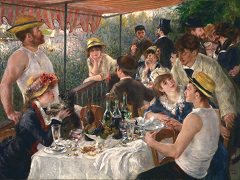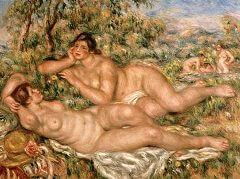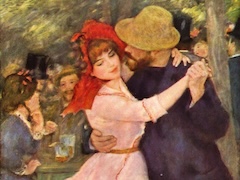Portrait of Paul Durand-Ruel - by Pierre-Auguste Renoir

A hundred years ago, in Paris, there were no dealers' galleries such as exist now, with their regularly changing exhibitions, their publications, their "stables" of artists; and there were only a few shops where paintings could be seen. Artists had to rely for professional income on chance sales, the hope of public commissions, teaching assignments, and luck. For the progressive painters the road was hard.
Shortly after the Paris World's Fair of 1885, Paul Durand-Ruel, a dealer in paintings, opened a shop in the Rue de la Paix. He had been fighting for recognition of the Barbizon painters, whose landscapes now seem so Arcadian in their peace and intimacy; and soon he was to have more virulent battles: he became a champion of the Impressionists. He began buying their works around 1870, and from then on the fortunes of the Impressionists and of Durand-Ruel were interlocked.
In 1866, still buffeted by critics, he took the advice of an American friend and opened a show of choice pictures in America. As he recalled it in his memoirs: "The exhibition was a great success, invited curiosity, and the reverse of what happened in Paris. It raised no hubbub, and not a single protest. The praise was unanimously favorable, and numbers of articles praising the show appeared in the New York newspapers, as well as in all the large cities." As a result of the favorable reception (which was actually not quite as "unanimous" as here recalled], he opened the Durand-Ruel Gallery in New York.
It was largely through this man's efforts that Renoir's - and other Impressionists' - financial problems were eased, and he thus made for himself a place in the history of modern painting.















